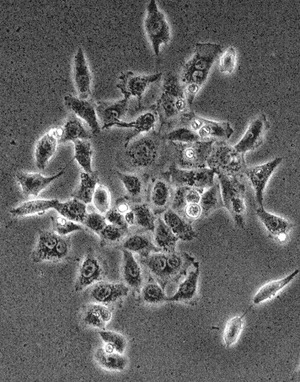Tissue culture facts for kids
Tissue culture (also called cell culture) is a cool way scientists grow living cells outside of their normal body or plant. Imagine taking tiny cells and putting them into a special dish in a laboratory. It's like giving them their own mini-home where they can grow and multiply!
Scientists use special containers like flasks or Petri dishes. Inside these, the cells get a special "food" called a growth medium. This medium has all the nutrients the cells need to stay healthy and grow. Sometimes, this food is a jelly-like substance called an agar plate.
Once the cells are in their new home with their food, they start to divide and make more cells. This allows scientists to study them closely and learn how they work.
Why Do Scientists Use Tissue Culture?
Scientists use tissue culture for many important reasons, especially for scientific research. Here are some examples:
- Studying Germs: They can grow tiny living things like bacteria or fungi. This helps them figure out what kind of germ is making someone sick. For example, they can grow bacteria to see which antibiotics (medicines that fight bacteria) will work best against them. This helps doctors choose the right medicine!
- Growing Plant and Animal Cells: Scientists also grow cells from plants and animals for different experiments.
- Plant Cuttings: If you take a small piece of a plant, like a stem, you can sometimes grow new roots from it. This is similar to how tissue culture can help grow whole new plants from tiny pieces.
- Helping Families: In a process called IVF, doctors can take an egg and sperm and combine them in a dish to help people have babies. This is a very special use of cell culture.
Images for kids
See also
 In Spanish: Cultivo de tejidos vegetales para niños
In Spanish: Cultivo de tejidos vegetales para niños




